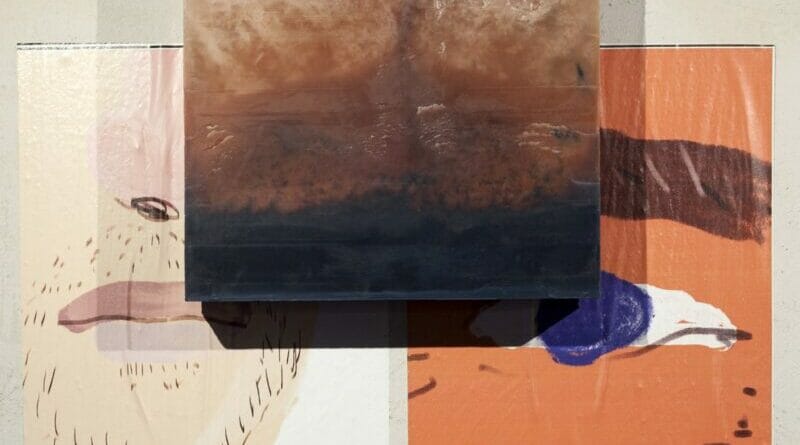CRAMUM: Sabino Maria Frassà and the talent program of young Italian contemporary art
[vc_row][vc_column][vc_column_text]*Foto in evidenza: Giulia Nelli, premio Cramum 2022 – Photo credit ©Francesca Piovesan[/vc_column_text][vc_row_inner][vc_column_inner width=”1/2″][vc_single_image image=”91181″ img_size=”full” add_caption=”yes” alignment=”center” onclick=”link_image”][/vc_column_inner][vc_column_inner width=”1/2″][vc_single_image image=”91166″ img_size=”full” add_caption=”yes” alignment=”center” onclick=”link_image”][/vc_column_inner][/vc_row_inner][vc_column_text]
Among the most interesting projects in support of young Italian art is the Cramum Prize which in the 2022 edition awarded for the first time a fiber artist Giulia Nelli. An award that is actually much more than an award thanks to an innovative vision that combines companies, collectors and institutions for a long-term investment in the work, research and practice of artists. I interviewed Sabino Maria Fassà the director to understand motivations, dynamics, evolutions and perspectives.
[/vc_column_text][vc_single_image image=”91175″ img_size=”full” add_caption=”yes” alignment=”center” onclick=”link_image”][vc_column_text]
CRAMUM is not just an award but a much more complex project. Can you tell us how it was born?
It is a project born more than 10 years ago from the urgency of a group of art enthusiasts dissatisfied with a worldly and commercial drift of Italian art, which looked at artists with a short-very short-term perspective, losing a systemic vision wide-ranging, necessary to enhance Italian artistic excellence. Art is the mirror for better or for worse of society and so the art world presents traits of inter-generational rigidity, clientelism, scarce ability to value merit alongside peaks of creativity. In short, we Italians are often our own worst enemy. We have thus created a series of projects in which the keywords have always been: independence, merit, excellence. We don’t follow trends, on the contrary we hope that our often going against the tide can create new and better ones.
[/vc_column_text][vc_single_image image=”91163″ img_size=”full” add_caption=”yes” alignment=”center” onclick=”link_image”][vc_column_text]
What are the characteristics of the Cramum Prize and how is it different from other contemporary art prizes?
Undoubtedly the heart over the years has been the Cramum Award: an award in the name, but which in reality has always been a talent program. For us it is not important to give “15 seconds of visibility” but to support the new generations to resist and develop their potential. In doing so we are helped first of all by our good will and by that of many friends – journalists, collectors and the many followers on social networks: without them we would be nothing. So whoever wins the cramum prize is accompanied for two years on a journey of exhibitions, publications and advice. For me personally it is always a great challenge: I pre-select the finalist artists without knowing them (in most cases) and I will have to work for two years with an artist who is selected by others (there are over 30 people on the jury) without being able to have my say, because I don’t vote in the final round. There is therefore a form of mutual entrustment of all the players in the award, based on mutual trust and esteem: we all bet on the <<other>>.
[/vc_column_text][vc_single_image image=”91151″ img_size=”full” add_caption=”yes” alignment=”center” onclick=”link_image”][vc_column_text]
What are the different activities of CRAMUM?
Since I then took over the sole direction of the institution, I have wanted to develop CSR and art projects, convinced on the one hand that the traditional players of the economic world in the artistic field were in an identity crisis, on the other because I am convinced that companies have a great potential not only economically, but also for the diffusion of art. The artistic world – not only in Italy – often oscillates between boring populism and a dangerous self-referential snobbery. We have to get out of this “corner” and involve the largest number of people, without trivializing art with an unsustainable visual gigantism that surrounds us.
What are the collaborations and synergies that a complex project like CRAMUM requires?
In addition to companies, with which important and intelligent collaborations have often developed, awards need institutions, places, etc. This is perhaps the weakest and most tiring point in Italy.
[/vc_column_text][vc_single_image image=”91148″ img_size=”full” add_caption=”yes” alignment=”center” onclick=”link_image”][vc_column_text]The 2022 edition was won by GIULIA NELLI, a young Italian fiber artist. From your privileged point of view on the artistic panorama, how has the presence (in quantity and quality of the works, by age of the artists, etc.) of fiber art changed in an important contest like yours in recent years?
Fiber art has a very important place in the cramum prize, since one of the founders – Andi Kacziba – is a well-known artist who starts from fabric and embroidery. Giulia Nelli, however, is the first fiber-artist to win the prize: I was happy that the jury had the maturity to bet on the future with this expressive language so ductile and important for Italy. A great sin remains the gender legacy which in most people associates, perhaps because of the well-known Penelope, textile art with women. We in cramum recently – again against the tide – have supported with great success from the public and critics – Fulvio Morella and his works created for Gaggenau in collaboration with Lelièvre Paris.[/vc_column_text][vc_single_image image=”91145″ img_size=”full” add_caption=”yes” alignment=”center” onclick=”link_image”][vc_column_text]
CRAMUM is a constantly evolving project. What’s new for the next edition? And in the long term?
The announcement of the next edition closes on June 30th and will see some fundamental transformations: on the one hand the collaboration that had lasted for 9 years with the Municipality of Milan ends, on the other an ever greater role is played by companies and collectors: the solo exhibition of the winner will be held in July 2024 at the Mercato Centrale in Milan, a place inside the Central Station where thousands of people pass and live every day. Not only will the exhibition of the finalists be held inside Reti SpA and will see the acquisition of a work by the Paneghini collection: however, the work will not be selected by Bruno and Ilenia Paneghini, but by the employees who live every day together with the works placed by collectors inside the company.
[/vc_column_text][vc_single_image image=”91178″ img_size=”full” add_caption=”yes” alignment=”center” onclick=”link_image”][/vc_column][/vc_row]
